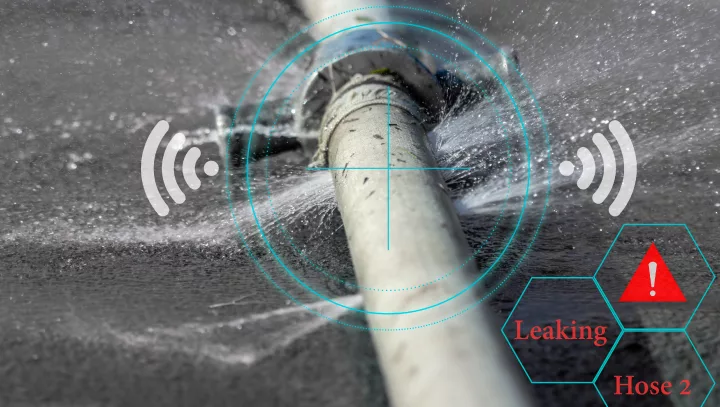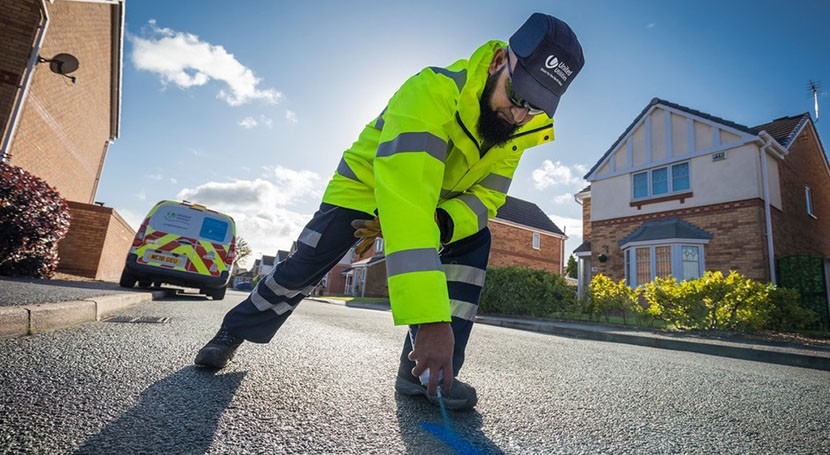Comprehensive Overview to Water Leak Detection for House Owners and Services
Comprehensive Overview to Water Leak Detection for House Owners and Services
Blog Article
Cutting-edge Solutions for Early Detection of Water Leakages in Buildings and Infrastructure
As the integrity of structures and infrastructure is extremely important, the difficulty of very early detection of water leakages has actually stimulated cutting-edge options that promise to change the way we guard against potential problems. From cutting-edge leakage detection technologies to the implementation of IoT sensing units for real-time monitoring, the landscape of leakage prevention is advancing rapidly. Maker learning algorithms use a glimpse right into the future of leakage prediction, while thermal imaging provides a non-intrusive method for pinpointing surprise leakages. Automated water circulation evaluation systems are reshaping just how leaks are identified and attended to, paving the method for a proactive method to water leak discovery. Each of these remedies holds the key to making sure the integrity and durability of our constructed environment, triggering a shift in the direction of an extra lasting and reliable future.
Advanced Leak Detection Technologies
Advanced leakage detection modern technologies, furnished with innovative sensing units and algorithms, play a critical function in swiftly recognizing and pinpointing water leakages in various settings. Electromagnetic sensing units can identify adjustments in electromagnetic areas caused by water, using yet an additional layer of leakage detection ability.

IoT Sensors for Real-Time Tracking
In the world of modern-day water leak detection, the integration of IoT sensors for real-time tracking stands for a pivotal development in improving aggressive leakage discovery capabilities. These sensors use continual surveillance of water supply, providing real-time data on water flow rates, pressure variations, and temperature modifications. By leveraging IoT modern technology, these sensing units can spot even the smallest anomalies in water usage patterns, allowing very early recognition of prospective leaks before they intensify into major problems.
IoT sensing units transfer data to a centralized platform, where advanced algorithms analyze the details and create alerts or notifications when abnormalities are detected. This real-time surveillance capacity permits residential or commercial property owners or facility supervisors to quickly resolve leaks, minimizing water damages, lowering fixing costs, and saving water resources.
Furthermore, IoT sensing units can be incorporated with building management systems, enabling automatic responses to spotted leakages, such as closing off water valves or turning on pumps to alleviate the effect of leaks. On the whole, the application of IoT sensors for real-time surveillance dramatically improves the efficiency and Home Page efficiency of water leak detection in structures and facilities.
Device Understanding Algorithms for Leak Forecast

One key benefit of utilizing artificial intelligence for leak forecast is its capability to continuously view publisher site find out and enhance its accuracy with time. As even more data is collected and fed right into the formula, it can fine-tune its forecasts and adapt to changing problems, ultimately increasing the integrity of leakage detection systems.
Moreover, artificial intelligence algorithms can aid in determining refined indications of leakages that may go undetected by conventional surveillance techniques. water leak detection. By evaluating complex data embed in real-time, these algorithms can give early cautions and alerts, enabling for prompt treatment and precautionary upkeep to mitigate prospective water damages and connected prices
Utilizing Thermal Imaging for Leak Discovery
Thermal imaging modern technology offers an appealing approach for identifying water leaks in different systems and frameworks. By utilizing infrared radiation and temperature variations, thermal imaging cams can identify concealed leakages that are not conveniently visible to the naked eye. When water gets away from pipes or frameworks, it frequently alters the temperature level of the bordering location, creating temperature differentials that thermal video cameras can record. These temperature level irregularities are then equated right into noticeable photos, highlighting the specific area of the leakage.
One of the essential advantages of thermal imaging for leakage detection is its non-intrusive nature. Overall, the usage of thermal imaging innovation boosts the effectiveness and accuracy of water leakage discovery, making it an important device for preserving the integrity of structures and infrastructures.
Automated Water Circulation Analysis Equipments
Exactly how can automated water circulation analysis systems change the detection and monitoring of leaks in numerous systems and infrastructures? Automated water circulation analysis systems supply a positive strategy to great post to read leak discovery by continuously monitoring water flow prices and patterns. By establishing standard data, these systems can swiftly identify inconsistencies that may suggest a leakage, enabling timely treatment to avoid substantial damages.
These systems utilize sophisticated formulas to analyze real-time data and give immediate notifies when abnormalities are found, enabling swift action to be taken. In addition, automated water flow analysis systems can be integrated with structure monitoring systems or IoT platforms, enhancing general performance and enabling remote tracking capabilities.
Furthermore, the data collected by these systems can be utilized for predictive maintenance purposes, helping to identify potential weak factors in the framework prior to leakages happen. Generally, the application of automatic water flow analysis systems can considerably boost leakage discovery and monitoring methods, eventually resulting in cost financial savings, minimized water waste, and boosted sustainability in buildings and infrastructure.

Verdict
Finally, the integration of sophisticated leak detection modern technologies, IoT sensing units, machine learning algorithms, thermal imaging, and automated water flow analysis systems offers ingenious solutions for early discovery of water leakages in buildings and facilities. These innovations allow real-time tracking, prediction of leaks, and efficient discovery approaches to stop water damage and waste. Executing these services can help in maintaining the honesty and sustainability of water supply in various settings.
Report this page